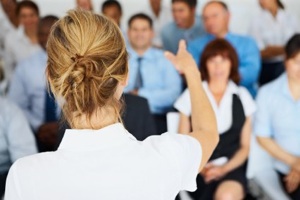Guard Training

Training is a Key To the Success of Your Security Program
This section of the website will explore the issue of training over the next few months. We will seek input from some of the best trainers and from institutions small and large. Be patient, come back often as this will be one of those sections that grows regularly as we attempt to answer those most frequently asked questions.


Whether you employ a large contingent of security officers or use staff, volunteers and docents to achieve your security, training is the key to the success of your security program. The questions most museums want to know answers to are these: 1. How much training do I need to provide, 2. What should the training include, and 3. What format should the training be conducted in? And the answer is: That depends! Obviously, if you are a museum that has hundreds of thousands of visitors each year or a museum that contains gold, diamonds or other items of great intrinsic value, you may need special training. But let’s talk about the “typical” museum, if there is such a thing.
Training generally is given in two formats. Formal or classroom training can be just what it implies or it can be one-on-one training with an instructor and a student in a classroom or office setting. On Job Training also called OJT is the other format that many museums use. OJT occurs when a senior employees such as a senior guard is assigned to “show the new guy around’ and teach him how it’s done.
It is almost a universal observation by consultants that regardless of the form of training used, the format is improperly implemented. The most common mistakes made in conducting classroom training include: 1. No lesson plan, so training is inconsistent and, 2. The training is rushed because the trainer has other things that need to be done. The mistakes made in implementing OJT are even greater. Too often, there is no lesson plan, the trainer is not really qualified to train, and the trainer simply passes on his own shortcuts and bad habits to the new officer. To work properly, an OJT program must be formal, the trainer must have been trained and agree to stick to the official curriculum.
Consultants often remark that a major complaint by museum managers is that the security guards don’t do their job properly and if they did, they eventually abandoned their good habits and began to take shortcuts. Another complaint is that performance is inconsistent among guards. One performs well and the other performs inadequately. These are all indicative of inadequate training or, too often, no training at all.
It’s easy to understand why this is a problem. You have a guard on staff and he gives you a week’s notice that he is taking a new job. You immediately notify the Human Resource manager to recruit a new guard. A week later a newspaper ad appears in the paper. At best, it takes several more weeks before you find a new guard and he reports for duty. You don’t have a full time trainer available to you and you have other things to do. If you do conduct one-on-one training, you need to rush it so you can get the guard on post where he is badly needed.
For smaller museums the best form of training might be OJT but only if you plan out in advance a curriculum to be taught, detail all of the major points to be covered and train the senior officer who will be conducting the training so it is done right and consistently. Don’t pick someone to train because he has been there the longest. Pick the guy most capable of doing a good job. Make sure he has signed on to the program and agrees to teach the curriculum and discourage adopting the bad habits he observes from his senior officer. This is the single greatest problem.
Above all, keep records of training. Here are the things you need to document:
-
1. The curriculum, that is, the total list of topics to be covered in the full program and the program’s total duration.
-
2. A lesson plan for each topic, that is, all of the points the trainer must make and the “right answer” to be conveyed to the guard.
-
3.The qualifications of the trainer. Why did you choose him to do the training?
-
4.A training record for each student showing what courses were taught, when, the duration, and the name of the training officer. Indicate that the student successfully completed each course.
So how much training is enough? Typically, an average small museum or a mid-sized regional museum require a MINIMUM of one full day of training before the guard is turned over to a senior officer in OJT. Topics like the layout of the building, the hours of operation, etc. should be covered in this day. Explain what a guard does in the museum and the general relationship you expect a guard will have with museum visitors. This is where you might include the very low cost video “Museum Security” the Guard’s Role”. A half day, of this initial day, should be devoted to a review of the security department’s policy manual containing all of the policies and procedures for security. The policy manual details, policy by policy, what the guard is supposed to do in each situation.
After the one day program the guard can be turned over to the OJT officer. Here he will work on post as a second officer, learning basic patrol procedures or post duties. This OJT duration will depend on the number of different guard posts you have. After the new guard has worked all of the posts and is certified to work alone, he may do so,
Soon after the initial training the security manager should assign the new guard to re-read the policy manual. This can be done on museum time, perhaps in a morning. Then, the manager should do another review of the policies with the new guard to be sure he understands all of the procedures.
Larger museums require more training and typically a week is devoted. They follow the above strategy but are certain to include more information on access control, parcel control, post and patrol procedures, fire prevention and protection, dealing with the public, calling emergency services and using the radio, and their authority to make arrests or detail suspects.
The bottom line is that unless you provide training it is not likely that your guards’ performance will be acceptable. The policy manual becomes the basis for all of your training. You will eventually have to provide specialized training on the topics above--access control, parcel control, authority to arrest, etc--and specialized training like use of a fire extinguisher is extremely important but not necessarily part of basic training in the smallest institutions.


What About Guard Training in the Smallest Institutions?
We asked Steve Layne, founder of the IFCPP, what training he thought was the absolute minimum any museum should provide to its security and non-security staff, even in the smallest, poorest institutions. We asked for a bulleted list and here is what he provided:
Basic Museum Security Training on a Shoestring
1. Site Specific Orientation to identify exits, fire extinguisher locations, evacuation routes, utility shutoffs, electrical panels, alarm panels.
2. Staff awareness briefing to include all staff to advise of reporting responsibilities, what to look for, and how to report.
3. Emergency evacuation training. Every staff member, docent, volunteer has a role in assisting with evacuations. A full-blown walk through exercise should be held to demonstrate each person's role.
4. Fire extinguisher training on a live fire. All staff need to know how to use the extinguishers on the property. The fire department will help to conduct a live fire exercise.
5. Conflict resolution. All staff, especially those acting in a security capacity need to know how to de-escalate a potentially violent situation. Role playing, based on real scenarios is an excellent training tool.
6. Active Shooter/Workplace Violence. All staff need to discuss the potential for dealing with an armed intruder, regardless of his/her intent. Local law enforcement may offer some advice, but the responsibility for immediate action rests with the institution. Training should include emergency evacuation, lock-down (shelter in place), and last resort, controlling the attacker.
7. Protecting valuable collections. The steps necessary to protect each collection vary with the nature of the institution, size of the workforce, availability of security officers, response time for police, and several other factors. The staff needs to know their responsibilities in observing and reporting, and in many instances, making contact with potential violators.
8. Emergency Response Coordination. Senior management needs to meet with local response agencies to familiarize them with the facility and coordinate how they will respond to several scenarios.
9. Legal Rights/Restrictions. All staff need to know and understand how the law deals with such issues as ejecting unruly patrons from the property, the use of force, denying admittance (barring), trespass, and a host of other legal concerns. Some museums have had success in getting the local bar association to give pro bono training on this.
10. Code of Conduct. Security officers are in the public eye, often more than other staff. Their actions, performance, and appearance are all important to the image of the institution. When officers are not present, any staff member tasked with enforcing the rules of the institution needs to understand basic requirements for conduct expected of employees. A separate code of conduct for visitors and others should be published and distributed. This is often called "Rules of Decorum for Museum Visitors". Each aspect of both codes needs to be properly understood by everyone.
OK, that’s great for the smallest and poorest. Can someone contribute a good well-rounded one day training curriculum for small regional museums with a guard force?
An Essential Read!
“Common Sense Supervision” by Roger Fulton. Available from Amazon and leading bookstores. Ten Speed Press. Only $9.99. This excellent book is an easy and quick read in the same manner as the “One Minute Manager”. Fulton is a former Deputy Commander of the NY State Police Academy who wrote the book to help colleagues recently promoted to supervisor. It is NOT police or security specific and is suitable for all. This is a best seller and has been translated into many languages.

If you are new to supervision there is one book that you absolutely must read. “Common Sense Supervision” by Roger Fulton, PhD should be on every museum bookshelf and it’s not just for security supervisors. Every first line supervision should read this book.
We need a Bibliography! Give us your list of “Essential Reads”. Consider preparing a bibliography for us. What books should be on the essential reading list for every museum security manager? Supervisor? What books should the museum security manager read about broader museum skills like collection management?
Use Navigation menu at top of page or go HOME from here.